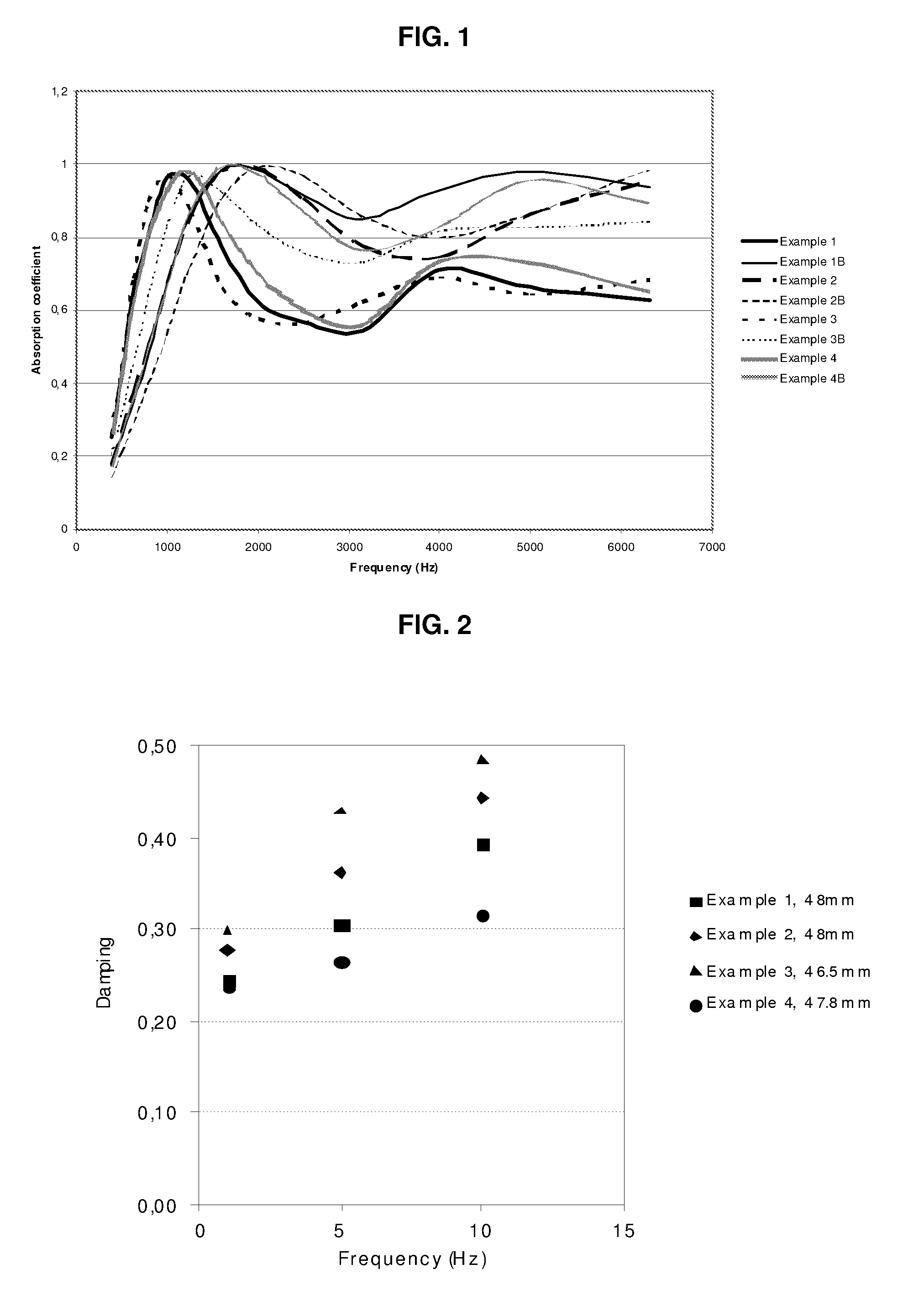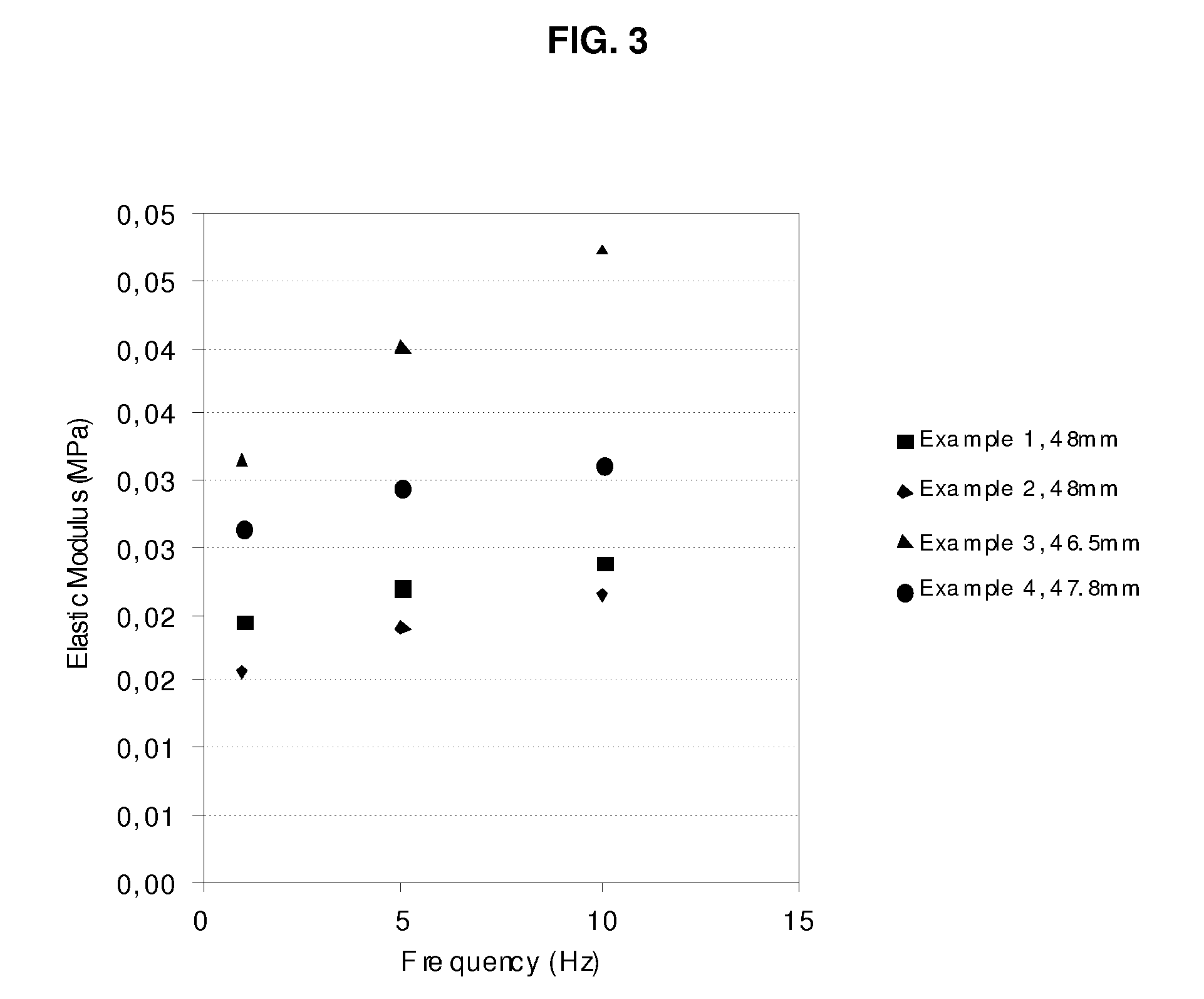Process for making low density high resiliency flexible polyurethane foam
a polyurethane foam, high resiliency technology, applied in the field of low density high resiliency flexible polyurethane foam, can solve the problems of difficult maintenance of the balance between these reactions, noise and vibration management, and the reaction of polyisocyanate itself forming a very rigid and brittle polymer
- Summary
- Abstract
- Description
- Claims
- Application Information
AI Technical Summary
Problems solved by technology
Method used
Image
Examples
Embodiment Construction
[0120]Comparative Examples A and B and Examples 1 to 4 comprise a formulated polyol blend reacted with a polymeric MDI. The polymeric MDI has an isocyanate content of about 32% by weight. The polyol blend and polymeric MDI are reacted on a high pressure impingement mixing machine equipped with a 50 cm by 50 cm by 5 cm test mold heated and also on various molds having different size and geometry. The mold temperatures vary between 55 to 75° C. The isocyanate index for Examples 1 to 4 vary between 55 and 80. After the foam has cured, the mold is opened, and the foam is removed from the mold. The de-mold time is the time, reported in seconds, from the injection of the reactive blend into the mold to when the foam is removed from the mold. The isocyanate:polyol mixing ratio by weight for each Examples 1 to 4 and Comparative Examples A and B are listed in Table 1.
[0121]For Comparative Example A and B and Examples 1 to 4 a formulated polyol blend (comprising polyols and other additives) i...
PUM
| Property | Measurement | Unit |
|---|---|---|
| density | aaaaa | aaaaa |
| density | aaaaa | aaaaa |
| density | aaaaa | aaaaa |
Abstract
Description
Claims
Application Information
 Login to View More
Login to View More - R&D
- Intellectual Property
- Life Sciences
- Materials
- Tech Scout
- Unparalleled Data Quality
- Higher Quality Content
- 60% Fewer Hallucinations
Browse by: Latest US Patents, China's latest patents, Technical Efficacy Thesaurus, Application Domain, Technology Topic, Popular Technical Reports.
© 2025 PatSnap. All rights reserved.Legal|Privacy policy|Modern Slavery Act Transparency Statement|Sitemap|About US| Contact US: help@patsnap.com



